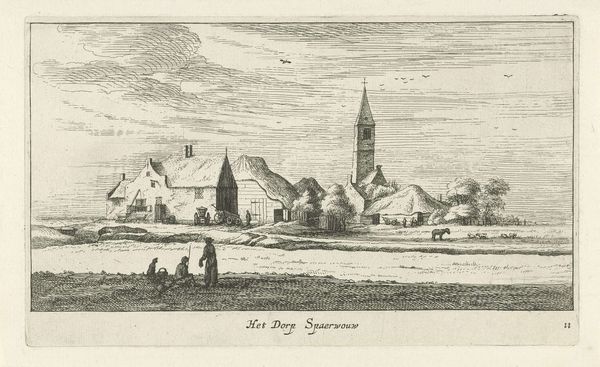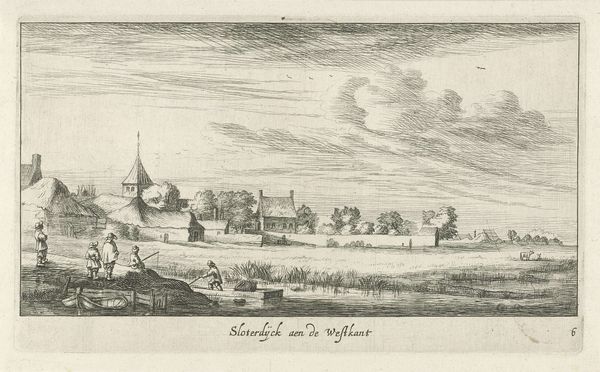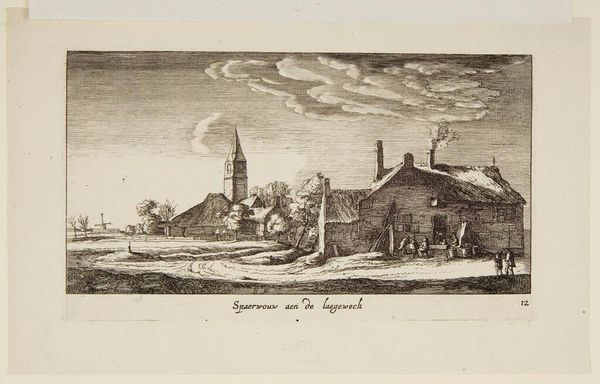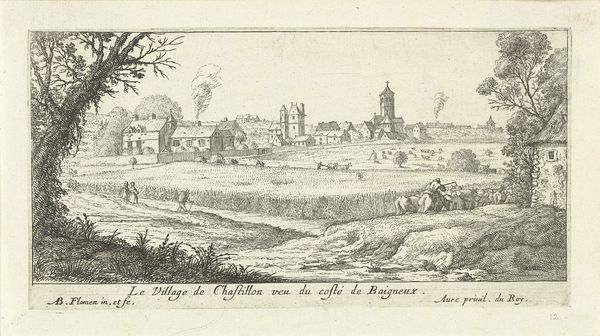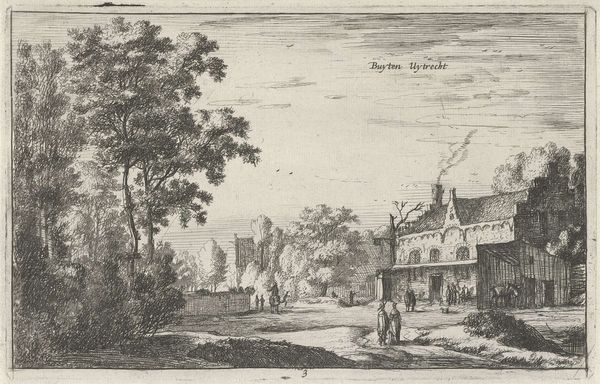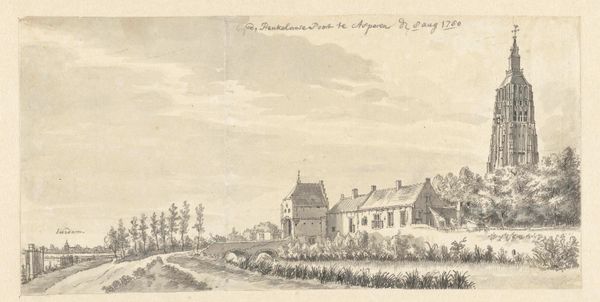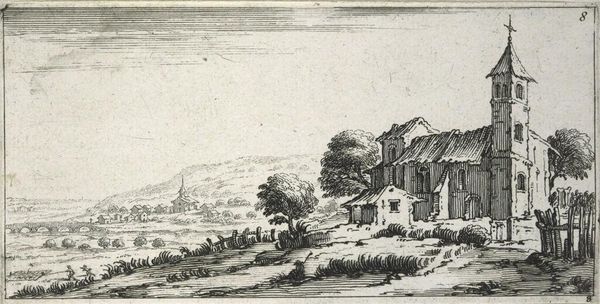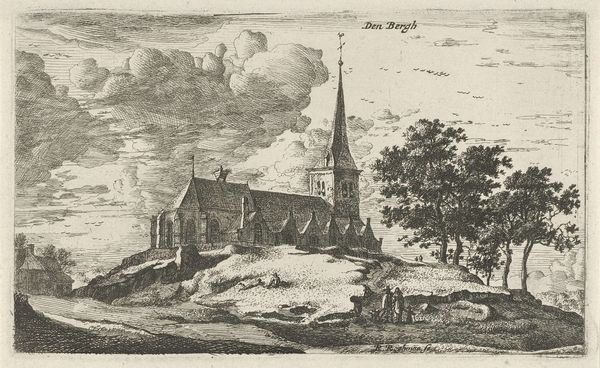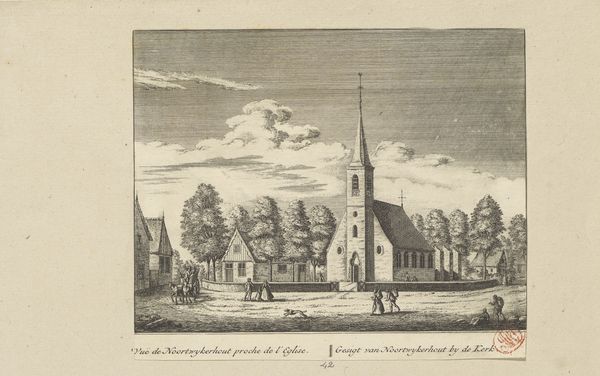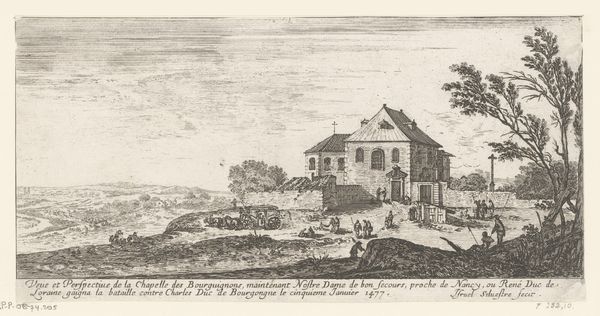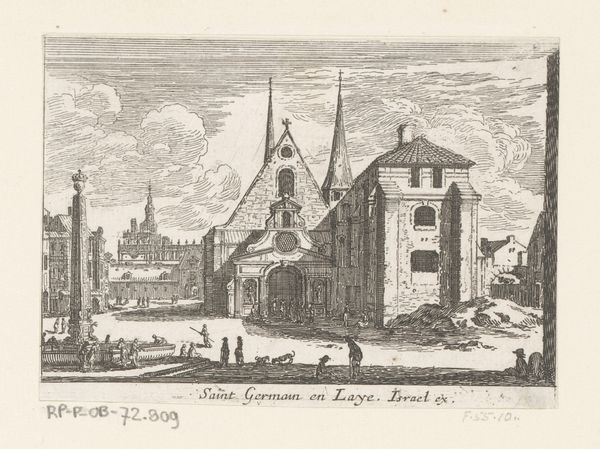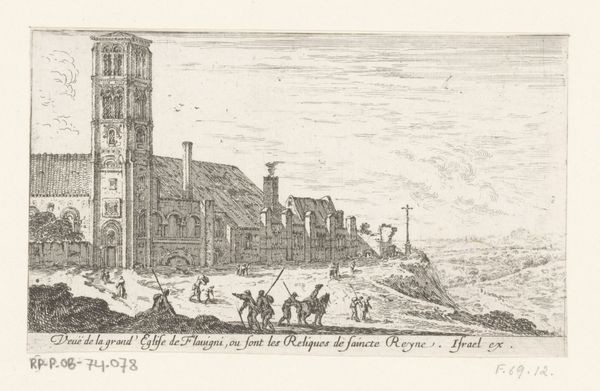
print, etching, engraving
#
dutch-golden-age
# print
#
etching
#
old engraving style
#
landscape
#
engraving
#
realism
Dimensions: height 120 mm, width 223 mm
Copyright: Rijks Museum: Open Domain
Curator: So this is Geertruydt Roghman's "Gezicht op Spaarnwoude," an etching and engraving that dates somewhere between 1637 and 1652, placing it firmly within the Dutch Golden Age. Editor: Instantly, I'm struck by the calm, almost storybook quality. It's simple, uncluttered, and you can practically smell the damp earth. A real slice of Dutch life. Curator: Indeed. As a print, its creation demanded a series of highly skilled actions—preparing the metal plate, applying the etching ground, the careful scratching of the design, and finally the inking and pressing. The social context of printmaking at this time is so crucial; these images circulated widely. Editor: It makes you think about the artist's hand, doesn't it? To take something monumental, like a landscape, and distill it into these fine, reproducible lines... the choices, the control. Even that plume of smoke coming from the chimney feels so intentional. Curator: And that’s a crucial point. Printmaking allowed artists like Roghman to democratize art viewing, offering landscapes to a burgeoning middle class eager to consume images of their surroundings. These prints documented and even helped to shape perceptions of the Dutch landscape. Editor: It’s incredible to imagine. I keep coming back to those figures outside the building, probably a local inn; that adds so much to the feeling, don't you think? They become essential players within this broader panorama, drawing the gaze and activating the scene. They appear almost to be in their own play. Curator: Absolutely. Consider the economic aspect too. Inns were hubs of social activity, places of commerce. The engraving captures both a sense of everyday life and the underlying material conditions of 17th-century Holland. Roghman even placed them next to what seems like supplies for beer. Editor: Well, that clinches it. Everyone looks comfy, it seems very appealing and easygoing. Looking at this reminds me how something as simple as a humble engraving could be imbued with layers and nuance. It is more than merely representational, in that way. Curator: Right, and thinking about this etching within the broader system of print production at that time truly opens our eyes to how art functioned socially and economically in the Dutch Golden Age. Editor: Exactly. It's amazing what new stories appear from images when we stop to think a bit. Thanks.
Comments
No comments
Be the first to comment and join the conversation on the ultimate creative platform.
